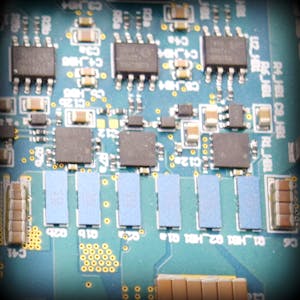Introduction to Power Electronics
Introduction to Power Electronics: A Gateway to Modern Power Conversion
Power electronics is one of the most transformative fields in electrical engineering, enabling efficient control and conversion of electrical energy. From smartphone chargers to electric vehicles and renewable energy systems, power electronics lies at the heart of almost every modern electronic device. Understanding its principles is key to designing systems that are energy-efficient, reliable, and compact.
What is Power Electronics?
Power electronics is a branch of electrical engineering that deals with the conversion, control, and conditioning of electric power using semiconductor devices. It bridges the gap between electronic circuits and electrical systems, allowing precise control over voltage, current, and frequency.
At its core, a power electronic system converts electrical energy from one form to another — such as:
-
AC to DC (Rectification)
-
DC to AC (Inversion)
-
DC to DC (Chopper Conversion)
-
AC to AC (Cycloconversion)
Each of these conversion processes uses power semiconductor devices like diodes, MOSFETs, IGBTs, or SCRs to switch electrical energy efficiently.
Why is Power Electronics Important?
Power electronics plays a crucial role in shaping the future of sustainable energy and advanced technology. Some key benefits include:
-
Energy Efficiency – By converting and controlling power with minimal losses, power electronic circuits help reduce energy waste.
-
Compact Design – High-frequency operation allows smaller inductors, transformers, and capacitors, leading to compact, lightweight systems.
-
Precise Control – Power electronics enables accurate voltage, current, and speed control in drives and converters.
-
Integration with Renewables – Solar inverters, wind converters, and battery systems all depend on efficient power electronics.
-
Electrification of Mobility – Electric vehicles rely heavily on power converters, inverters, and motor drives for propulsion and charging.
Core Building Blocks of Power Electronics
A typical power electronic system consists of the following elements:
-
Power Semiconductor Devices: These are the switches that handle large currents and voltages (e.g., MOSFETs, IGBTs, SiC, and GaN devices).
-
Passive Components: Inductors, capacitors, and transformers store and transfer energy during switching.
-
Control Circuits: Microcontrollers or digital signal processors (DSPs) provide feedback-based control to regulate output voltage or current.
-
Gate Drivers: These interface between control signals and high-power switches, ensuring safe and fast operation.
-
Protection Circuits: Safeguard the system from overvoltage, overcurrent, or temperature extremes.
Conversion Types and Applications
| Conversion Type | Description | Typical Application |
|---|---|---|
| AC → DC | Converts alternating current to direct current | Power supplies, chargers |
| DC → AC | Converts direct current to alternating current | Inverters, UPS systems |
| DC → DC | Steps voltage up or down | EV battery systems, converters |
| AC → AC | Changes frequency or voltage | Variable-speed drives |
These conversions form the backbone of many technologies:
-
Renewable energy systems: Solar PV inverters, wind converters
-
Electric vehicles: Motor drives, onboard chargers
-
Industrial automation: Variable-frequency drives (VFDs)
-
Consumer electronics: Laptop adapters, phone chargers
Modern Trends in Power Electronics
The field of power electronics continues to evolve with advancements in materials and control techniques. Key trends include:
-
Wide Bandgap Semiconductors (SiC, GaN): Offer higher switching speeds, efficiency, and thermal performance.
-
Digital Control: Microcontrollers and DSPs enable real-time adaptive control.
-
Integration: Modules now combine control, protection, and power stages for compact solutions.
-
Thermal Management Innovations: Efficient heat sinks, advanced cooling, and packaging improve reliability.
-
Smart Grid and IoT Integration: Power converters are becoming intelligent, networked, and data-driven.
Learning Power Electronics
Understanding power electronics requires a multidisciplinary approach, combining knowledge of:
-
Circuit theory
-
Semiconductor physics
-
Control systems
-
Electromagnetics
-
Thermal and reliability design
By mastering these areas, engineers can design efficient, sustainable, and intelligent power systems.
💡 Conclusion
Power electronics is the silent force behind modern energy systems. Whether it’s renewable integration, efficient power supplies, or electric transportation, this field continues to enable the technologies shaping our world. Learning the fundamentals opens the door to innovation in sustainable energy, smart devices, and beyond.
























No comments